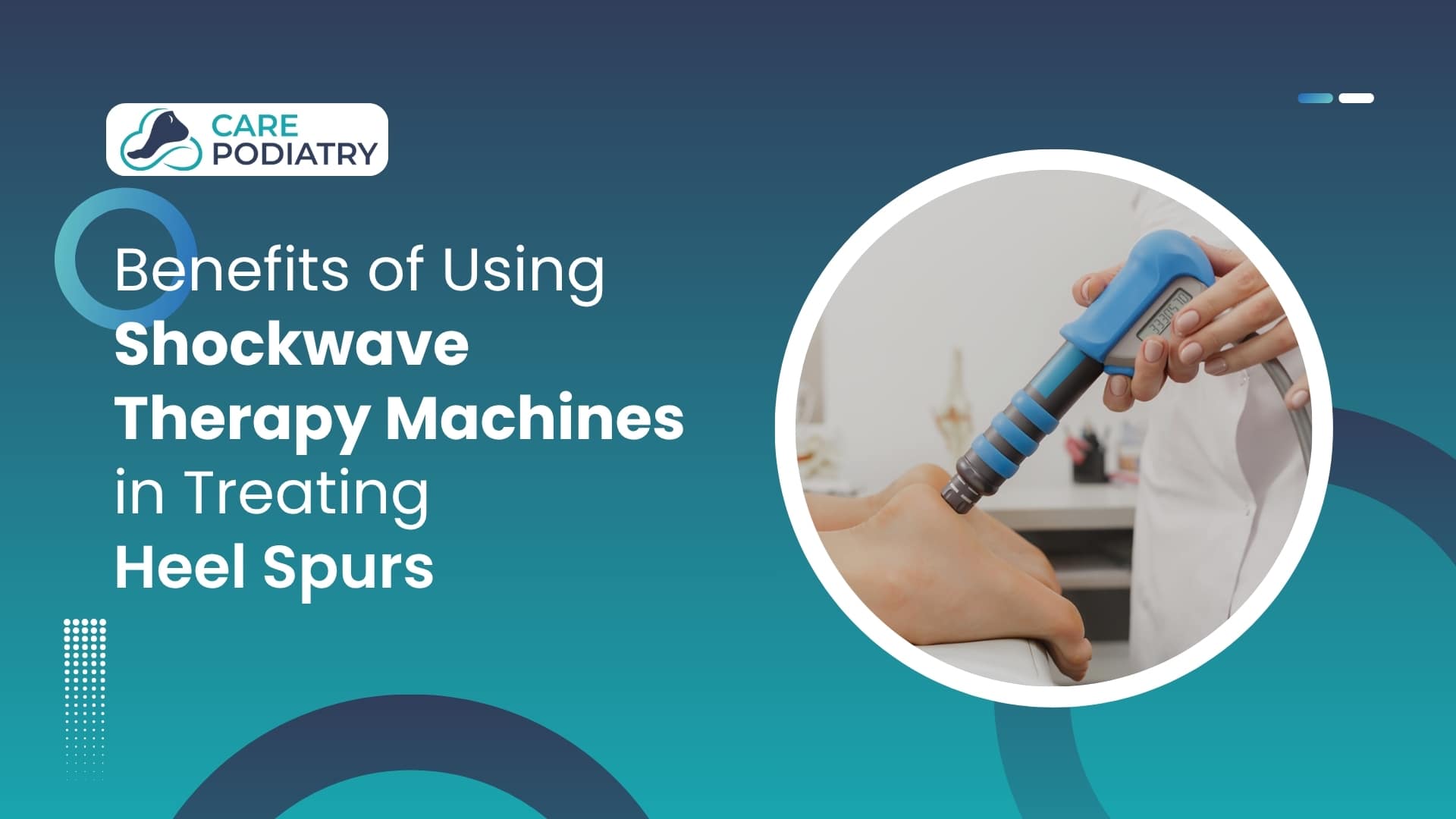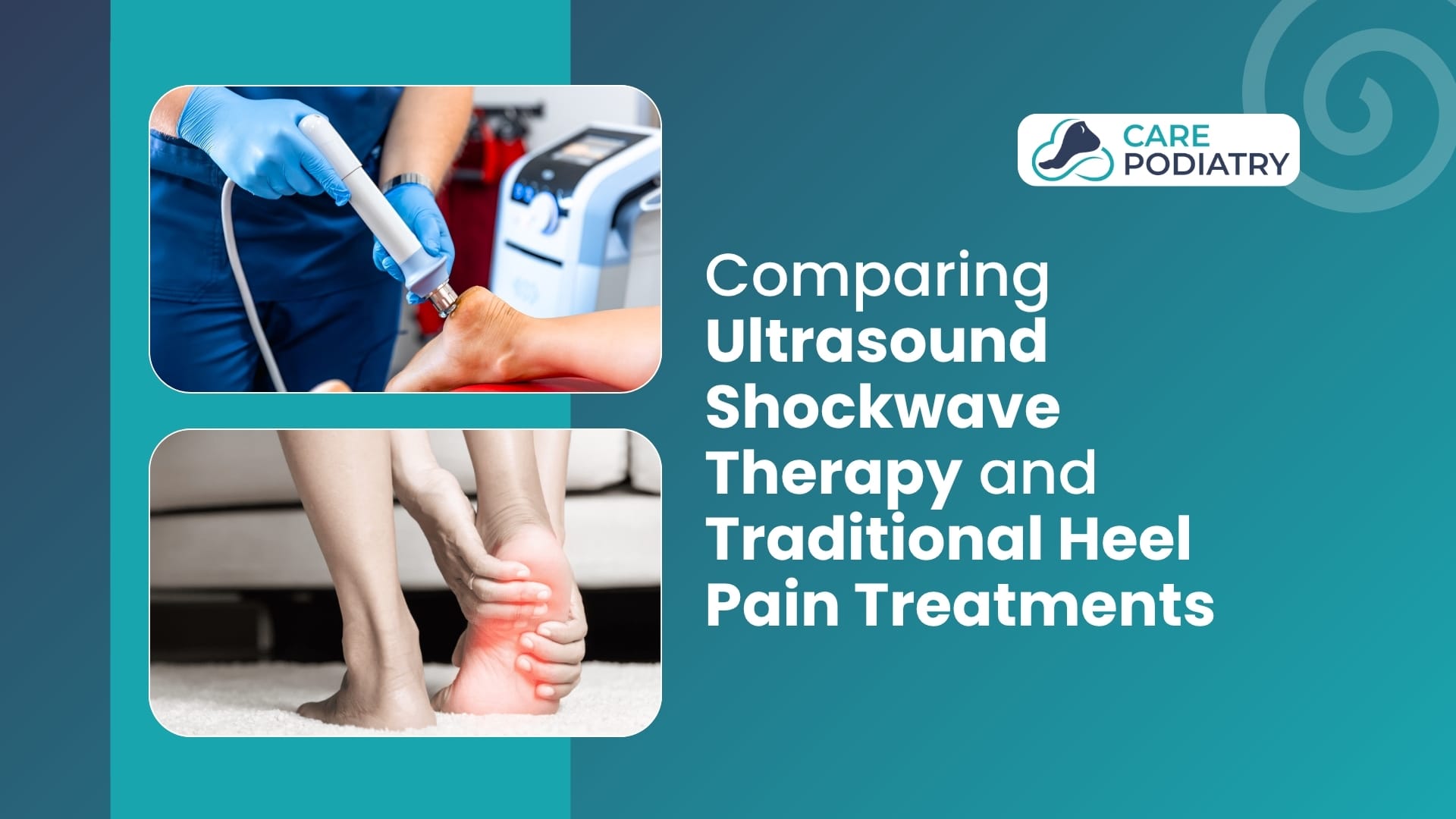Heel pain can turn simple things, like walking to your car or standing in line for coffee, into an ordeal. If you’ve tried stretching, icing, and new shoes with no relief, you might have chronic plantar fasciitis. That’s where ultrasound shockwave therapy may come in.
Plantar fasciitis ranks among the leading causes of heel pain, affecting over 2 million people in the U.S. every year. While many cases improve with home care, stubborn cases can last months or even years without proper treatment.
Let’s break down exactly what ultrasound shockwave therapy is, how it works, and whether it’s your best option for lasting relief.
How It Works
Plantar fasciitis develops when the plantar fascia becomes irritated or inflamed. The condition often triggers sharp, intense pain, especially with your first steps in the morning.
Ultrasound shockwave therapy, or extracorporeal shockwave therapy (ESWT), delivers targeted sound waves to encourage the body’s natural healing process in injured tissue. Here’s the science, simplified:
- The sound waves create controlled microtrauma in the fascia.
- Your body responds by sending more blood flow and healing cells to the area.
- Over time, this reduces inflammation, encourages tissue repair, and relieves pain.
Instead of just masking the pain, ESWT helps fix the underlying problem so you can get back to pain-free movement.
The Procedure
At Care Podiatry, the procedure is quick, easy, and non-invasive. No needles. No surgery. No long recovery. Here’s what you can expect:
- Consultation & Diagnosis: Your podiatrist first confirms that plantar fasciitis is the cause of your heel pain and checks for other possible issues like stress fractures or nerve entrapment.
- Preparation: A special gel is applied to your heel to help transmit the sound waves effectively.
- Treatment: A small handheld device is placed on the affected area and delivers controlled pulses. Each session usually lasts 15–20 minutes.
- Post-Treatment: There’s no downtime. You can walk out of the clinic and resume most activities the same day.
Most patients receive a series of three to five weekly sessions. Some notice relief after the first few treatments, but maximum benefit usually shows over several weeks as the tissue continues to heal.
What to Expect During Treatment
At Care Podiatry, the process is straightforward. After your initial evaluation, the podiatrist applies ultrasound gel to the heel and uses a handheld device to deliver the shockwaves.
You may feel mild discomfort during the procedure, but most patients describe it as tolerable, more like a tapping or tingling sensation. No anesthesia is required, and you can return to normal activities the same day.
Typically, patients receive 3–5 sessions spaced one week apart. Improvement often starts after the second or third session, with continued relief over several weeks as the tissue heals.
Advantages of Ultrasound Shockwave Therapy
When weighed against the risks of surgery, the benefits often make ESWT an appealing choice for those with stubborn plantar fasciitis.
- Non-invasive: No incisions or anesthesia.
- Minimal downtime: You can walk immediately after treatment.
- Drug-free relief: Avoids repeated steroid injections.
- Long-term results: Many patients remain pain-free for months or years.
- Quick sessions: Appointments usually take less than half an hour.
Cost
Cost can vary depending on the clinic and the number of sessions needed.
- Average range: $300–$500 per session in the U.S.
- Total investment: Around $900–$2,500 for a complete treatment plan.
Some insurance companies cover ESWT if conservative methods have failed, but coverage varies. Considering the cost of ongoing pain, missed work days, and the potential expense of surgery, many patients find shockwave therapy to be a cost-effective solution.
Is It Right for You?
You might be a good candidate for ESWT if:
- Your heel pain has lasted longer than six months.
- You’ve tried stretching, orthotics, rest, or physical therapy without success.
- You want to avoid steroid injections or surgery.
- Pain is interfering with your daily life or work.
A consultation with a podiatrist is the best way to know for sure. At Care Podiatry, we take time to understand your pain, your lifestyle, and your goals before recommending treatment.
Why Choose Care Podiatry
Not all clinics offer ultrasound shockwave therapy, and not all providers have the experience to deliver it effectively. At Care Podiatry, you get:
- Accurate diagnosis: We confirm the exact cause of your heel pain before treatment.
- Advanced equipment: State-of-the-art ESWT technology for safe, targeted results.
- Experienced care: Our podiatrists specialize in heel pain and have helped hundreds of patients walk pain-free.
- Customized treatment plans: Tailored to your pain level, foot structure, and activity needs.
Our mission is simple: help you get back on your feet, pain-free, as quickly and safely as possible.
Take the Next Step
Living with heel pain isn’t just frustrating; it affects your quality of life. If plantar fasciitis has been slowing you down, ultrasound shockwave therapy may finally give you the relief you’ve been searching for.
Ready to find out if ESWT is right for you? Book an appointment with Care Podiatry today and take the first step toward pain-free mornings.
Frequently Asked Questions
How long does it take for shockwave therapy to work for plantar fasciitis?
Most patients begin to feel some pain relief after the second or third session, but full results typically develop over 6–12 weeks as the plantar fascia continues to heal.
Is ultrasound shockwave therapy painful?
The treatment can feel uncomfortable, similar to quick tapping or tingling on the heel, but most patients tolerate it well. Any soreness after treatment usually fades within a couple of days.
Can shockwave therapy cure plantar fasciitis permanently?
Many patients experience long-term relief after a full course of treatment. While results vary, ESWT can significantly reduce pain and prevent flare-ups when combined with good footwear and stretching habits.
How many sessions of shockwave therapy do I need?
A typical treatment plan involves 3–5 sessions spaced about one week apart. Your podiatrist will recommend the exact number based on the severity of your condition.
Does insurance cover shockwave therapy?
Some insurance plans cover ESWT after conservative treatments have failed, but coverage varies. Care Podiatry can help verify your benefits and discuss payment options if needed.



